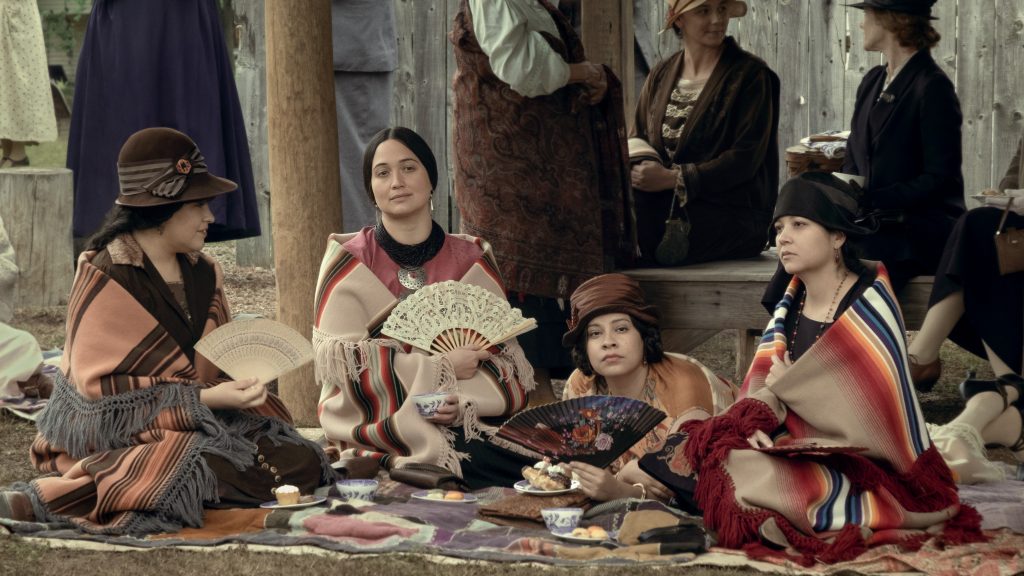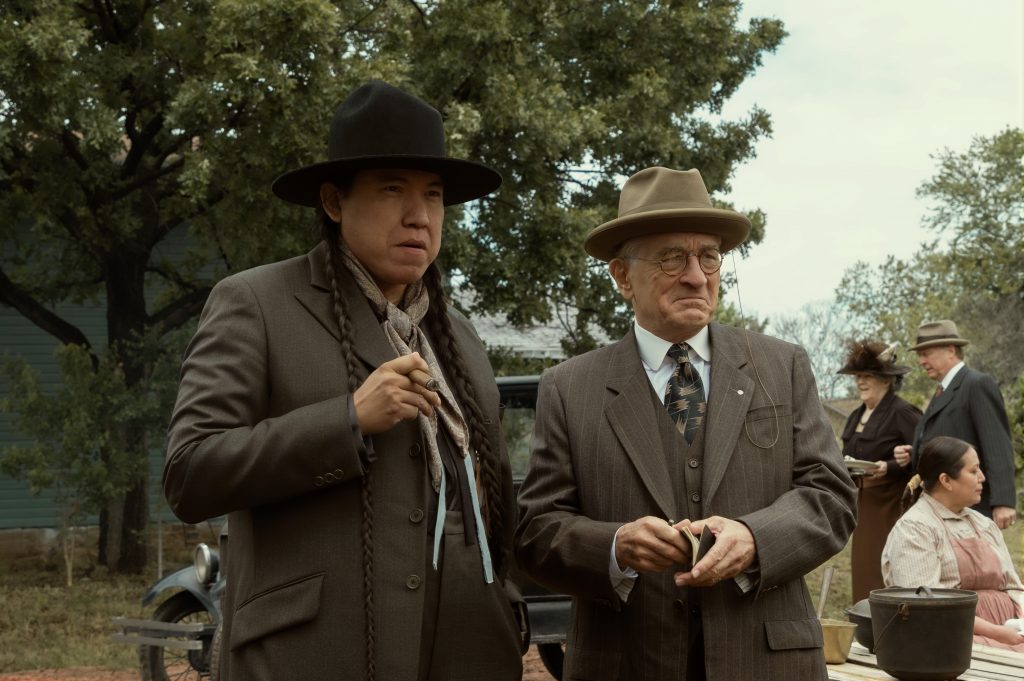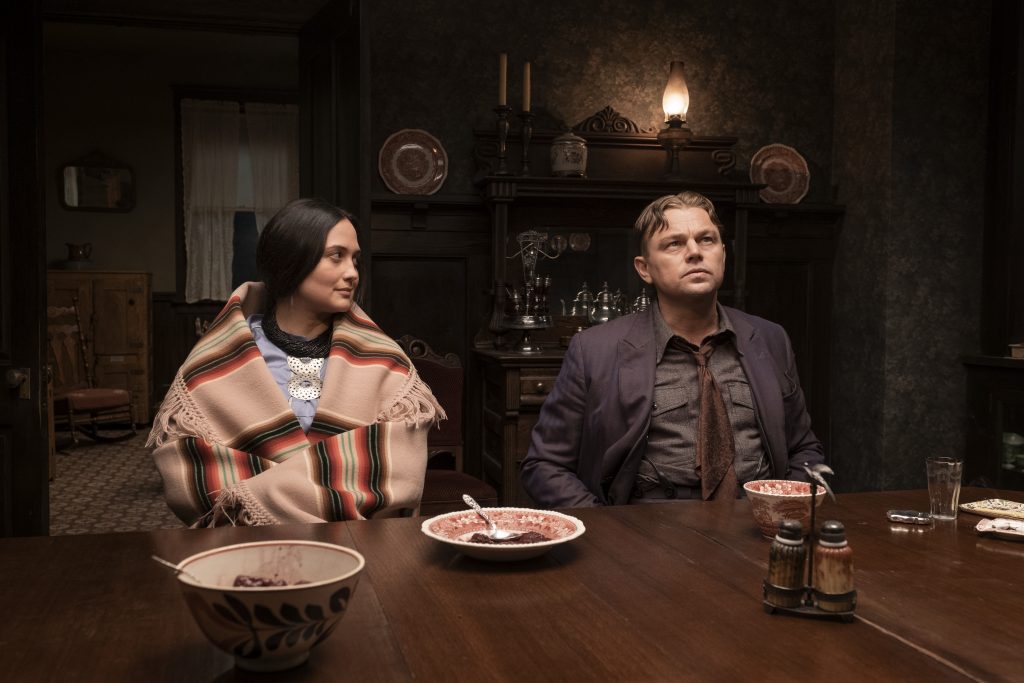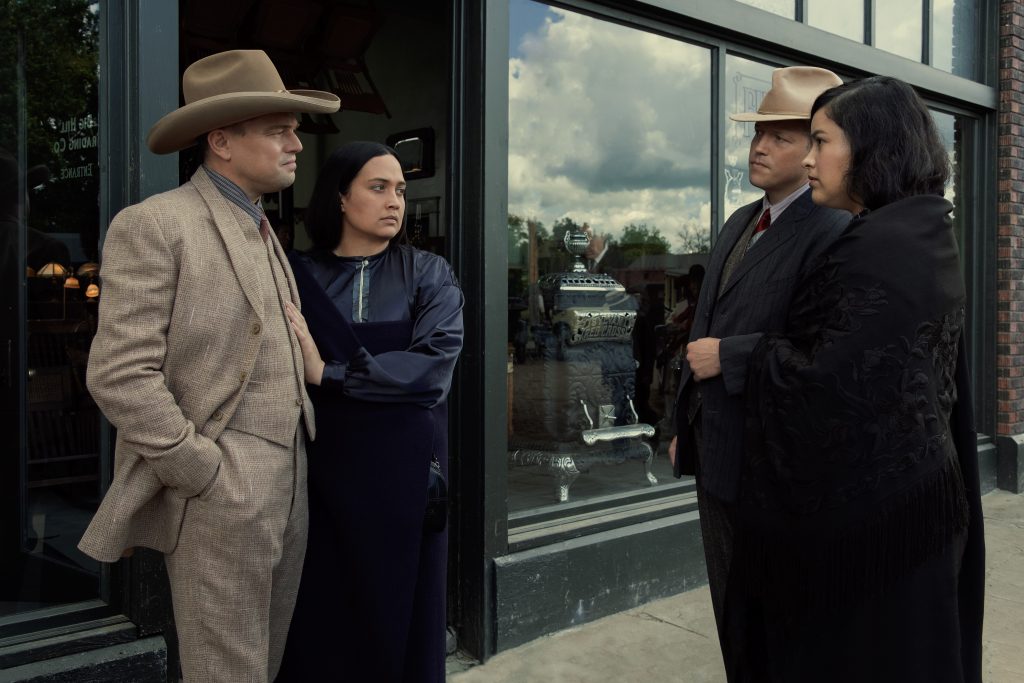
For his latest film, Killers of the Flower Moon, director Martin Scorsese reunites with his longtime casting director Ellen Lewis, who has been working with him for decades, most recently on The Irishman, Silence, and The Wolf of Wall Street. Alongside Lewis is Rene Haynes, who joins to provide her expertise on an aspect that isn’t always part of Scorsese’s films: Indigenous roles.
Below the Line spoke with Lewis and Haynes about their process and their familiarity with David Grann’s book that inspired their film. They shared their eagerness for casting families but also their desire to shy away from staying too close to history or physical resemblance since acting is about much more than just imitating what already exists.
They also highlighted star Lily Gladstone as well as other great finds from the ensemble, as well as the casting switch for executive producer and star Leonardo DiCaprio, who appears alongside Scorsese’s other longtime muse, Robert De Niro, for the first time in a feature film but was originally supposed to play an altogether different character.
Below The Line: How did you first become involved with this project?
Ellen Lewis: I’ve been working on Martin Scorsese’s films for many years, starting with New York Stories and Goodfellas, and I knew about this project starting in about 2018. I had read the book, and as soon as I knew that this was looking like something we were going to be working on, I contacted Rene, who I had worked with on Godless, the Netflix series, directed by Scott Frank, who also directed The Queen’s Gambit. I knew that I needed phenomenal support and taste and a partner to work on the Indigenous casting of this film.
Rene Haynes: And that answers my question. Ellen called me, and of course, I said yes! “When? Where do I have to be?”
BTL: Rene, were you familiar with the book beforehand?
Haynes: Yes, I was familiar with David Grann’s book and also years and years earlier, Charles Red Corn had sent me a book called A Pipe for February. And as it turns out, he’s no longer with us, but many of his relatives we met through our open calls and are in the film.

BTL: Do you start with the casting for something like this with the book, or with archival documents and photographs and other things? What’s the best place to start to try to be as accurate as possible?
Lewis: The best place to start, obviously, was with this amazing book that David Grann wrote, and it’s true. When I called Rene, Rene was just like, “I was hoping you were going to call.” So you start with that, but then Marianne Bower, one of our producers, Marty’s archivist, amazing research human, started getting us information. I was getting films. There were home movies from the Osage from the 1920s. There was footage from the Rotary Club in the town.
You just start getting a sense of what the community looked like and felt like. There were photos of everybody who, I mean, this is all based on real people, many, obviously, of the family members, their photos are all in the book. But a lot of those outlaws are real. Tom White is real. But what you do is that you take that and then you have to clear your mind of that, because what we don’t do is we don’t cast lookalikes. But you want to get the essence of somebody. You want to get the soul and feeling of people. But that’s our phenomenal starting point.
BTL: I’ve been a big fan of Lily Gladstone’s for a while. I saw her earlier this year in The Unknown Country and Fancy Dance, which hasn’t been released yet. This is an excellent platform for her. At what point did she become attached and was she always who you both thought was the right person for this role?
Haynes: I’ve known Lily since her first film, which I cast. When I read the script, because I like to look at the script first and foremost, her voice kept coming to me. You can see that Mollie speaks very little. She says multiple things in her silence, and Lily is a master of that. The essence of Mollie and the essence of Lily kept coinciding. We considered many talented Indigenous actresses for the roles. But Lily was, from the beginning, for both Ellen and I, someone that we were both familiar with and we both thought should be in the conversation.
Lewis: Right, in a very big way. I had seen the Kelly Reichardt film Certain Women, so I had a strong feeling about her, but as Rene is saying, you don’t want to be overly confident because you need to be open to other ideas, but I did say to Marty pretty early on, possibly in 2019, before the pandemic happened, “I think we’re going to be okay.” He was like, okay, and mentioned the Kelly Reichardt film.
To say that she is magnificent in the film, I think, is an understatement. It is a heartbreaking, deeply touching film, and I love that you’re familiar with her work, because I’ve repeatedly said: we didn’t discover Lily Gladstone. Lily Gladstone is a very accomplished actress. We’re just lucky that she was available, and Rene knew her so well, and that Marty and Leo both responded to her so strongly as soon as they were reading with her. What an incredible performance.
Haynes: And fortuitous that it was the right person and the right role at the right time.

BTL: In a film like this that’s so long, there are so many characters we don’t even meet until a long time into its run. Formative early on are the sisters. What was the process like getting those roles cast since they’re so crucial to the beginning of the film?
Haynes: We weren’t even considering sisters until we knew who Mollie was. Mollie is the nucleus that we are building that family around. So the sisters fell into place once we had Mollie, and they’re all extremely talented ladies. Family resemblance is something that is – I personally love casting families, so we were looking for the essence of those ladies, but we also had met many, many, many Osage ladies and we were looking for actresses who brought that same element of all of the Osage women that we met.
Lewis: I think it’s so unusual too for a film to tell a story about a family, and a family of women. Starting obviously with Lily, but then also Tantoo Cardinal as Lizzie Q, as the matriarch of this family again sets a tone that I think is very important to who the sisters are. Rene just has this incredible, vast knowledge of Indigenous actresses, so we tried different people. But as Rene said, building a family, you want a family to feel like a family. I think and hope that we succeeded in that.
BTL: You definitely did. There’s also the other family. I have to imagine that Leonardo DiCaprio and Robert De Niro were not the result of a long search for actors who might be good for those these roles, but have some previous affiliation with the director. Were they already attached to star, and was it clear who they would be playing?
Lewis: They were already attached, but as has been mentioned many times, Leo was going to be Tom White. Bob was always going to be King Hale, but I’ll leave it to Marty’s stories about how that switch happened. It just seemed like a much more interesting way to tell this story through Mollie and Ernest. A tragic and complicated love story. But then we were lucky to have Jesse Plemons, who I think is one of the greatest actors in the world, to play Tom White. You have a somewhat sense of relief from the horror when he knocks on Ernest Burkhardt’s door, and perhaps some of this horror will stop. But yes, Leo was originally going to be Tom White, and then he became Ernest Burkhardt.
BTL: We’re talking about families, and I also noticed Scott Shepherd, who does a really incredible job where you don’t really know what to make of him. He’s definitely creepy, but the arc of the film doesn’t take him in the direction that audiences might expect. What can you say about putting him in the film and his role?
Lewis: Again, casting brothers, I think Scott is a remarkable, understated actor. He’s the kind of actor that I felt confident that I thought Marty would respond to. I think, in his own quiet and dangerous way, because I do think Scott has a danger about him, he adds a lot to that role. I don’t know if you’re familiar, Scott is an amazing theater actor. He’s part of the Wooster Group and the Elevator Repair company in New York. Very interesting, avant-garde theater companies in New York. He’s a great, great actor.
BTL: Later on, we see actors like Brendan Fraser and John Lithgow, who don’t have very large parts. How do you get actors of that caliber to just appear for a couple scenes? I assume people are eager to work with Martin Scorsese in whatever way possible.
Lewis: Right. And what we did was I didn’t cast those roles till later because this was a very long shoot. I knew if I cast people too early, they wouldn’t end up being available. I really waited till about five weeks before and we weren’t trying to do star cameos in any way, but it was just what you’re saying, which is people are excited, want to work with Marty, understandably so. I do what my process is with him, which is I talk to him, I bring him about eight ideas and then we discuss it. They’re both great actors, and I think they add a really interesting energy to that part of the film.

BTL: For you, Rene, is there anyone else from the ensemble who really was either very difficult to find or really impressed you?
Haynes: No, I mean, I love everyone that we cast. There are a few standouts of people who came through this massive open call that we had. Tommy Schultz, who plays Blackie in the film, he was someone who never acted before. He came through an open call. We had a massive open call in Oklahoma, just for Indigenous talent, first in Pawhuska, which is the seat of the Osage nation, and then in Oklahoma City and Tulsa.
We saw about 2,500 people. Tommy Schultz, who plays Blackie, was one of those people. I think he gives just a phenomenal performance. I particularly enjoyed casting the little children that help us go through the passage of time. Mollie and Ernest’s children get incrementally older, and that was a lot of fun because that’s not one or two children. That’s multiple children.
Lewis: I had mentioned to Rene before that I find William Belleau so heartbreaking and poignant in a microcosm way of the tragedy of the Osage, and that’s someone Rene has known for many years.
Haynes: I gave William his first job, in a miniseries called DreamKeeper, I think we cast it in 2001. He is a phenomenal actor. He’s a professional actor in Canada, and this is a great platform for people to see him in this country and on an international scale. So we’re very excited about that.
BTL: For a film of this scale, do you feel like there’s that much more to do with casting, or it really isn’t so different just because people do end up with these long arcs changing over the course of time?
Haynes: For me, I’ve done ninety-minute films that had 103 speaking roles in them, so it’s just the nature of whatever the project is.
Lewis: I agree. Exactly. I don’t know how many speaking roles there are in this film. I try actually not to do a count. It’s just like, okay, let’s just keep rolling here. We start at the top and let’s keep going. You’re just building the world hopefully through the faces for the director and it’s just a fascinating journey, really.
Rene and I both really love casting, and obviously the film, I think, is so full and rich and the texture of the faces and the essence of the people, hopefully really comes through. But yeah, it’s not about how long it is, but you are building the world.
I much prefer casting the small day players actually than the leads because, I don’t know, it’s just always interesting. The people that you’re meeting and you just need to believe the words they’re saying, so you get to try all sorts of people from all different walks of life.
Killers of the Flower Moon is now playing in theaters.





